
JASA Express Letters
Scope & Guideline
Advancing acoustics through rapid research dissemination.
Introduction
Aims and Scopes
- Auditory Perception and Cognition:
Research related to how humans and animals perceive and process auditory information, including speech intelligibility, sound localization, and the cognitive aspects of auditory processing. - Acoustic Measurement and Modeling:
Studies involving the measurement and modeling of acoustic phenomena in various environments, including underwater acoustics, room acoustics, and sound propagation. - Technological Advances in Acoustics:
Innovations in acoustic technologies, such as hearing aids, cochlear implants, and sound analysis tools, focusing on improving auditory experiences and outcomes. - Biological and Ecological Acoustics:
Research on the role of sound in biological and ecological contexts, including animal communication, soundscapes, and the impact of anthropogenic noise on wildlife. - Speech and Language Processing:
Investigations into speech production and perception, including the effects of noise on speech communication and the development of speech recognition technologies. - Noise and Vibration Control:
Studies aimed at understanding and mitigating noise pollution and vibration, including the design of materials and structures for sound absorption and isolation.
Trending and Emerging
- Machine Learning and Artificial Intelligence in Acoustics:
An increasing number of studies are leveraging machine learning techniques for tasks such as sound classification, speech recognition, and acoustic modeling, indicating a growing trend towards integrating AI in acoustics research. - Environmental and Ecological Acoustics:
Research focusing on the impact of sound in ecological contexts, including studies on underwater acoustics and soundscapes in natural habitats, is gaining traction, reflecting a heightened awareness of environmental issues. - Adaptive and Personalized Hearing Technologies:
There is a notable rise in research related to adaptive technologies for hearing aids and cochlear implants, emphasizing personalized approaches to improve auditory experiences for users. - Interdisciplinary Approaches to Sound Studies:
Emerging themes highlight collaborations across disciplines, combining insights from physics, engineering, biology, and cognitive science to tackle complex problems related to sound and hearing. - Acoustic Effects of Social and Cultural Factors:
An increasing focus on how social and cultural contexts influence auditory perception and language processing indicates a trend towards understanding the interplay between acoustics and human behavior.
Declining or Waning
- Traditional Psychoacoustic Studies:
There has been a noticeable decrease in studies focusing solely on traditional psychoacoustic methods, possibly due to the rise of more advanced computational techniques and machine learning applications in auditory research. - Basic Hearing Mechanisms:
Research centered on the fundamental mechanisms of hearing, such as basic auditory thresholds and simple auditory response measurements, appears to be waning as the field progresses toward more complex and applied studies. - Static Acoustic Measurements:
The prevalence of static measurement studies, such as those focused solely on sound level and frequency response without dynamic or contextual analysis, is decreasing in favor of more dynamic and real-world applications.
Similar Journals
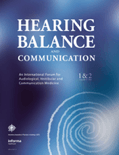
Hearing Balance and Communication
Advancing auditory and vestibular health through research.Hearing Balance and Communication is a prominent peer-reviewed journal dedicated to advancing the fields of Otorhinolaryngology, Speech, and Hearing. Published by Wolters Kluwer Medknow Publications, this journal serves as a valuable resource for researchers, clinicians, and students invested in exploring the multifaceted aspects of auditory and vestibular health. With an ISSN of 2169-5717 and an E-ISSN of 2169-5725, it has established itself as a significant platform since its inception in 2013, boasting a commendable Q3 ranking in both Otorhinolaryngology and Speech and Hearing categories as of 2023. The journal emphasizes the dissemination of original research, reviews, and case studies that foster a deeper understanding of hearing and balance, as well as effective communication practices. Located in the United Kingdom, Hearing Balance and Communication is a key player in bridging research and clinical practice, ensuring that vital findings reach the professionals who can implement them in real-world settings, thus increasingly impacting patient care and public health.
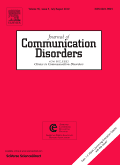
JOURNAL OF COMMUNICATION DISORDERS
Transforming Research into Action for Communication Success.Journal of Communication Disorders (ISSN: 0021-9924; E-ISSN: 1873-7994) is a leading publication in the field of communication disorders, published by Elsevier Science Inc. With a converged publishing timeline from 1967 to 2024, this journal has established itself as a vital resource for researchers, clinicians, and educators dedicated to advancing knowledge in areas such as linguistics, language processing, speech, and hearing. It boasts an impressive reputation, ranking in the Q1 category for Linguistics and Language, and Q1 in LPN and LVN as well as Q2 in Speech and Hearing for 2023, highlighting its influence and scholarly impact within these domains. The journal is recognized for its rigorous peer-reviewed articles and its contributions to our understanding of cognitive neuroscience, experimental psychology, and communication disorders—further evidenced by its ranking in the top percentiles in various fields. Although it does not currently offer Open Access options, readers and contributors alike will appreciate the depth and breadth of research published within its pages. This journal serves an essential role in bridging the gap between research and practical application, making it a must-read for anyone involved in the study or treatment of communication disorders.
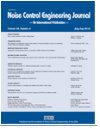
NOISE CONTROL ENGINEERING JOURNAL
Shaping a Sounder World with Cutting-Edge ResearchNOISE CONTROL ENGINEERING JOURNAL, published by the Institute of Noise Control Engineering, is a leading platform dedicated to the field of noise control science and engineering. With its ISSN 0736-2501 and E-ISSN 0736-2501, this journal has been a pivotal resource since its inception, covering issues from 1979 to 1985 and again from 1987 to the present, making significant contributions to disciplines such as Acoustics, Aerospace, Automotive, and Mechanical Engineering. The journal is recognized for its extensive scope and serves as an essential repository for researchers, professionals, and students engaged in noise control methodologies and practices. Though it currently does not operate under an open access model, it fosters a comprehensive review of contemporary studies with an aim to enhance the understanding of noise-related challenges in various sectors, as reflected in its categorization within the Q4 quartile for multiple engineering disciplines according to the 2023 rankings. As it continues to engage with contemporary issues, NOISE CONTROL ENGINEERING JOURNAL remains an influential point of reference for advancing noise control strategies and policies, thus holding a vital position in both engineering and public health domains.
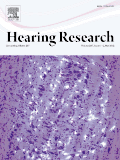
HEARING RESEARCH
Elevating the discourse on hearing and sensory systems.HEARING RESEARCH, published by Elsevier, is a premier journal in the field of sensory systems, focusing on the multifaceted aspects of hearing, including auditory function, pathology, and rehabilitation. Established in 1978, it has continuously contributed to the advancement of auditory science, making it a vital resource for researchers, professionals, and students looking to expand their understanding of auditory mechanisms and disorders. With an impressive Scopus ranking of #12 out of 42 in the Neuroscience: Sensory Systems category, and a notable impact factor placing it in the Q2 quartile for 2023, the journal showcases rigorous, peer-reviewed research that drives innovation and informs clinical practice. Though it does not offer open access options, its significant contributions to the field are accessible to those affiliated with institutions worldwide. Located in Amsterdam, Netherlands, HEARING RESEARCH stands at the forefront of auditory research, fostering scholarly dialogue and enhancing knowledge in this crucial area of neuroscience.

Acoustics
Transforming Noise into Knowledge: A Hub for Acoustic InsightsAcoustics is a dynamic, peer-reviewed open access journal published by MDPI, dedicated to advancing the field of acoustics since its inception in 2019. With an E-ISSN of 2624-599X, this journal serves as a pivotal platform for researchers, professionals, and students engaged in the study of sound, its generation, transmission, and reception, as well as its applications across various domains, such as engineering, environmental science, and health. Based in Switzerland, Acoustics has quickly established its reputation, achieving a commendable Q2 ranking in the Acoustics and Ultrasonics category, as well as a noteworthy 16th position out of 44 in Scopus ranking, placing it in the 64th percentile among its peers. The journal aims to provide a comprehensive understanding of acoustic phenomena through interdisciplinary collaborations and innovative research, while ensuring immediate and free access to all published articles. For those vested in the ever-evolving landscape of acoustics, this journal represents a crucial resource for the latest developments and findings in the field.

CoDAS
Connecting scholars and practitioners in the realm of communication disorders.CoDAS, an esteemed academic journal published by the SOC BRASILEIRA FONOAUDIOLOGIA, serves as a leading platform for interdisciplinary research within the realms of linguistics, speech, and hearing sciences. Established as an Open Access journal in 2013, it ensures broad dissemination and accessibility of scholarly work, significantly benefitting researchers, clinicians, and students alike. Based in Brazil, CoDAS has garnered credibility with its impressive Q2 ranking in Linguistics and Language, as well as its rankings in Otorhinolaryngology and Speech and Hearing categories, reflecting its substantial contribution to these fields. The journal's impact is underscored by its robust Scopus rankings, including the 67th percentile in Language and Linguistics. With a commitment to fostering innovative research and bridging gaps between theory and practice, CoDAS continues to play a vital role in advancing knowledge and clinical practices in communication disorders and auditory sciences.

JOURNAL OF SOUND AND VIBRATION
Advancing knowledge in sound and vibration.The JOURNAL OF SOUND AND VIBRATION, published by Academic Press Ltd - Elsevier Science Ltd, stands as a pivotal platform in the fields of Acoustics and Ultrasonics, Mechanical Engineering, and Mechanics of Materials. Since its inception in 1964, the journal has served as a beacon for researchers and practitioners looking to share and advance their knowledge on sound and vibration phenomena. With an impressive Q1 ranking in multiple categories and a Scopus ranking placing it in the top 10% of significant journals in related fields, it offers a high-impact venue for disseminating innovative research. The journal's well-rounded scope intersects fundamental and applied science, ensuring it remains relevant to a diverse audience, including students and professionals aiming to deepen their understanding of dynamic mechanical systems. Although primarily subscription-based, the journal's commitment to academic excellence makes it a valuable resource for all involved in the study and application of sound and vibration research, contributing significantly to advancements across engineering and physics disciplines.
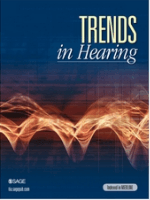
Trends in Hearing
Advancing the frontiers of auditory research.Trends in Hearing, published by SAGE Publications Inc, stands as a leading open-access journal dedicated to the rapidly evolving field of hearing science. With an ISSN of 2331-2165, it provides an invaluable platform for researchers, professionals, and students alike to disseminate and access pioneering research. Since its inception in 2014, the journal has garnered a strong reputation, maintaining a prestigious Q1 ranking in both Otorhinolaryngology and Speech and Hearing as of 2023. Additionally, its impressive Scopus rankings place it in the top tier of health professions, especially in speech and hearing (Rank #8/66, 88th percentile) and medicine (Rank #27/123, 78th percentile). With its commitment to accessibility and quality, Trends in Hearing aims to advance the understanding of auditory mechanisms, rehabilitation techniques, and the latest innovations in hearing technology, ensuring that critical insights and developments reach a global audience. Explore the latest trends and contribute to the discourse in this essential area of research.
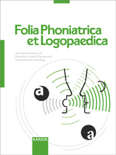
FOLIA PHONIATRICA ET LOGOPAEDICA
Empowering Scholars in the Dynamic World of CommunicationFOLIA PHONIATRICA ET LOGOPAEDICA, published by KARGER in Switzerland, stands as a premier journal in the fields of linguistics, phonetics, and speech therapy. With a rich history beginning in 1949 and spanning multiple decades, this esteemed journal has maintained a commitment to advancing research and scholarship in communication sciences, covering crucial topics relevant to both clinical practice and theoretical frameworks. Holding a prestigious Q1 ranking in Linguistics and Language, the journal also achieves high standings in related categories, with notable placements in Speech and Hearing and Nursing. Researchers, professionals, and students will find the insights and findings published within its pages to be invaluable for both academic pursuits and practical applications. Access options are available through traditional subscription models, enhancing its accessibility for dedicated scholars seeking to contribute to or expand their knowledge in this dynamic field.
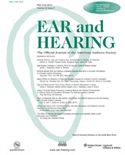
EAR AND HEARING
Transforming insights into auditory health.EAR AND HEARING, published by LIPPINCOTT WILLIAMS & WILKINS, is a premier journal dedicated to advancing the fields of Otorhinolaryngology and Speech and Hearing. With an ISSN of 0196-0202 and an E-ISSN of 1538-4667, this prestigious journal has established itself as a leading resource for researchers and clinicians alike since its inception in 1980. As of 2023, it proudly occupies Q1 quartile positions in both Otorhinolaryngology and Speech and Hearing, reflecting its influence and impact in the scientific community, further underscored by its exceptional Scopus rankings—#1 in Speech and Hearing and #9 in Otorhinolaryngology. Although it does not offer Open Access options, EAR AND HEARING remains an invaluable repository of cutting-edge research, reviews, and clinical insights that aim to enhance understanding and treatment of auditory and vestibular disorders. Its relevance is amplified by a comprehensive scope that encompasses innovative clinical practices and fundamental research, making it an essential read for researchers, professionals, and students dedicated to improving auditory health.